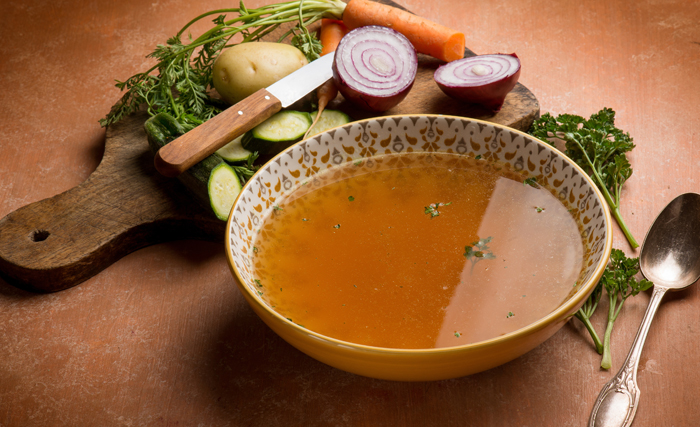Part 2 of the MACRO-trio Plan: Bad, Good & Best Carbohydrates
FEBRUARY 8, 2017 by OLIVIA NEELY, RDN, LD
This is part 2 in our series about the MACRO-trio lifestyle diet plan, brought to you by Philadelphia nutritionist Olivia Neely, RDN, LD. See part 1 in our series offering a whole-food alternative to Philadelphia weight loss!
In Part 1 of this series, I introduced my lifestyle diet plan that can benefit everyone. Usually, I wouldn’t make such a broad statement since nutrition is so very individualized. However, because everyone starts with the same basic mechanisms of digestion and metabolism – we eat food and it gives us energy and/or gets stored as fat to use later – we can all benefit from this simple plan.
You know from my last post that this simple plan is called MACRO-trio, based on the fact that our bodies need all three macronutrients to run optimally. These macronutrients are carbohydrates, fats and proteins. Over this post and the next, I’ll tell you everything you need to know about them.
Remember, one of the main purposes of this plan is to simplify mealtime, but we have to understand some basic information first. Let’s dive in…
MACRONUTRIENT #1: Carbohydrates
I’ll start with one of the most controversial macronutrients in this mix: carbohydrates. There’s so much information out there about carbs… Don’t eat them, eat ALL of them, eat NONE of them: how are we to know what to do? I’ll tell you.
Enjoy carbs. Just enjoy the right kinds.
Before we jump into the more beneficial types of carbs, let’s cover the basics. Carbohydrates are one or more sugar molecules bound together, and they can be starchy or non-starchy. This classification depends on how quickly the sugar is digested and absorbed into the bloodstream. Starchy carbs generally contain more stored sugar than non-starchy carbs.
Carbs digest the same in everyone: they break down into sugar and are absorbed into the bloodstream to be used as energy. I will be posting a future blog about what happens if we can no longer use these carbs as energy, but for now, what you need to know is this: Too many processed and quick-digesting carbs, in the absence of protein and fat, cause hormone dysregulation, lock the doors to fat loss and increase the risk of diabetes.
The types of carbs we eat and how we pair them with the other two macronutrients (proteins and fats) contribute greatly to our health today and years down the road. Each of us should be balancing our carbohydrates with fats and proteins on a regular basis, which is exactly why we’re covering carbs first. They have the biggest effect on blood sugar and hormone regulation.
Carbohydrates can provide us with vitamins, minerals, fiber, energy and water when chosen wisely, so let’s look at all of the carbohydrates we should be eating and enjoying.
My Top 2 Recommended Carbohydrate Sources: Vegetables and fruits.
Yep, these are carbohydrates sources and they’re what we should be loading up on! Vegetables should be consumed at every single meal and fruits a little more sparingly, as I’ll touch on below. Brings a whole new meaning to “low-carb,” doesn’t it?? Can we really be eating low carb and eat enough beneficial vegetables and fruits in a day?
There are some other delicious non-starchy carb sources that we want to embrace as well. The following is just a start to the right types of carbohydrates. You should load up on these, seriously, aim for at least 2-3 cups of these at each meal!
NON-STARCHY CARBS- artichokes, arugula, asparagus, bean sprouts, beet greens, bell peppers, bok-choy, broccoli, Brussels sprouts, cabbage, cauliflower, celery, chicory, chives, collard greens, cucumber, eggplant, fennel, garlic, green beans, jalapeno peppers, jicama, Jerusalem artichokes, kale, kohlrabi, leeks, lettuce, mushrooms, mustard greens, okra, onions, parsley, peppers of all colors, radicchio, radishes, shallots, snow peas, spaghetti squash, spinach, sugar snap peas, summer squash (patty pan, yellow, zucchini), Swiss chard, turnip greens ….
The following starchy carbs are still destined to be part of a whole foods diet, but generally we want to eat less of these, around ½-1 cup at meals. Of course, this depends on your activity level, medical history and other factors, but it’s a great place to start!
STARCHY CARBS AND FRUIT (yes, fruit isn’t a freebie)- adzuki beans, apples, apricots, beet, black beans, berries, banana, cantaloupe, carrots, cherries, chickpeas, cranberries, corn, figs, grapefruit, kiwi, kidney beans, lentils, lima beans, mango, navy beans, nectarines, long cooking oatmeal (steel-cut or rolled), oranges, papaya, peaches, pears, potato, pumpkin, quinoa, tomatoes, watermelon, winter squash (butternut, acorn), Yams ….
Now that we have a better understanding of the carbs we should be enjoying 80-100% of the time, let’s cover the choices we should avoid or enjoy sparingly.
My Top Carbohydrate Sources to Limit: Grains – whole and processed.
Grains (especially gluten containing) in the form of pasta, bread, muffins, cakes, cookies and any and all other processed, refined carbohydrates that take your blood sugar levels for a roller coaster ride, contribute to inflammation and do not support your metabolism and brain function. If you are choosing grains to be a part of your diet be sure to look for whole grains in their natural form and use them sparingly – not whole grain flour. For example go for that Jasmine rice instead of that rice cake or even better choose the vegetable carb, like a sweet potato instead of the “mixed grain” or “whole grain” piece of bread.
In fact, no one NEEDS whole grains. We have been taught over the years that anything “whole grain” is good for us. Guess what? Marketing tactic. From a nutrition standpoint even whole wheat bread of whole grain bread is mostly devoid of any kind of real nutrients. Even whole grains turn to sugar in the bloodstream promoting imbalanced blood sugar levels, sugar cravings and inflammation. Flour containing products can create poor thyroid function, slow metabolism and weaken the immune system. In fact, for those suffering with any endocrine related issue I recommend to eliminate flour containing products. When grains are processed into these sometimes seemingly healthy alternatives, they act very differently in the body. In fact, wheat bread contains a very unusual type of carbohydrate called Amylopectin-A which spikes blood sugar higher than pure table sugar.
A quick search for “healthiest bread” indicates that Pepperidge Farm’s Whole Grain Honey Wheat is a healthy choice. A quick look at the nutrition label tells us there are 21gm of carbohydrates in one slice, which means a typical standard sandwich with two slices is 42gm of carbs. That turns into 10.5 teaspoons of sugar in the body… over 10x the amount we need in the bloodstream at one time!
Why waste your money and health on processed sources of carbs like these, which provide little to no benefit to your body, when you could be nourishing yourself with delicious, whole-food sources of carbs at every meal? Replace bread with vegetables and fruits and you’ll get all of the things bread promises to deliver, at a higher concentration AND without all of the negative side effects!
In summary your plate should start off with a 2-3 cups of non-starchy carbohydrates and .5-1 cup of starchy carbohydrates or fruits from the recommended sources above. Better get chewing!
In the next post, you guessed it… I’ll review the recommended and not recommended sources of proteins and fats and how much you should be eating of each. You’ll also learn why fats are my personal favorite macronutrient!
Want to learn more about your individual macronutrient and dietary needs? Reach out to us for a consultation today! Just call 215-558-2731 or fill out our contact form.




